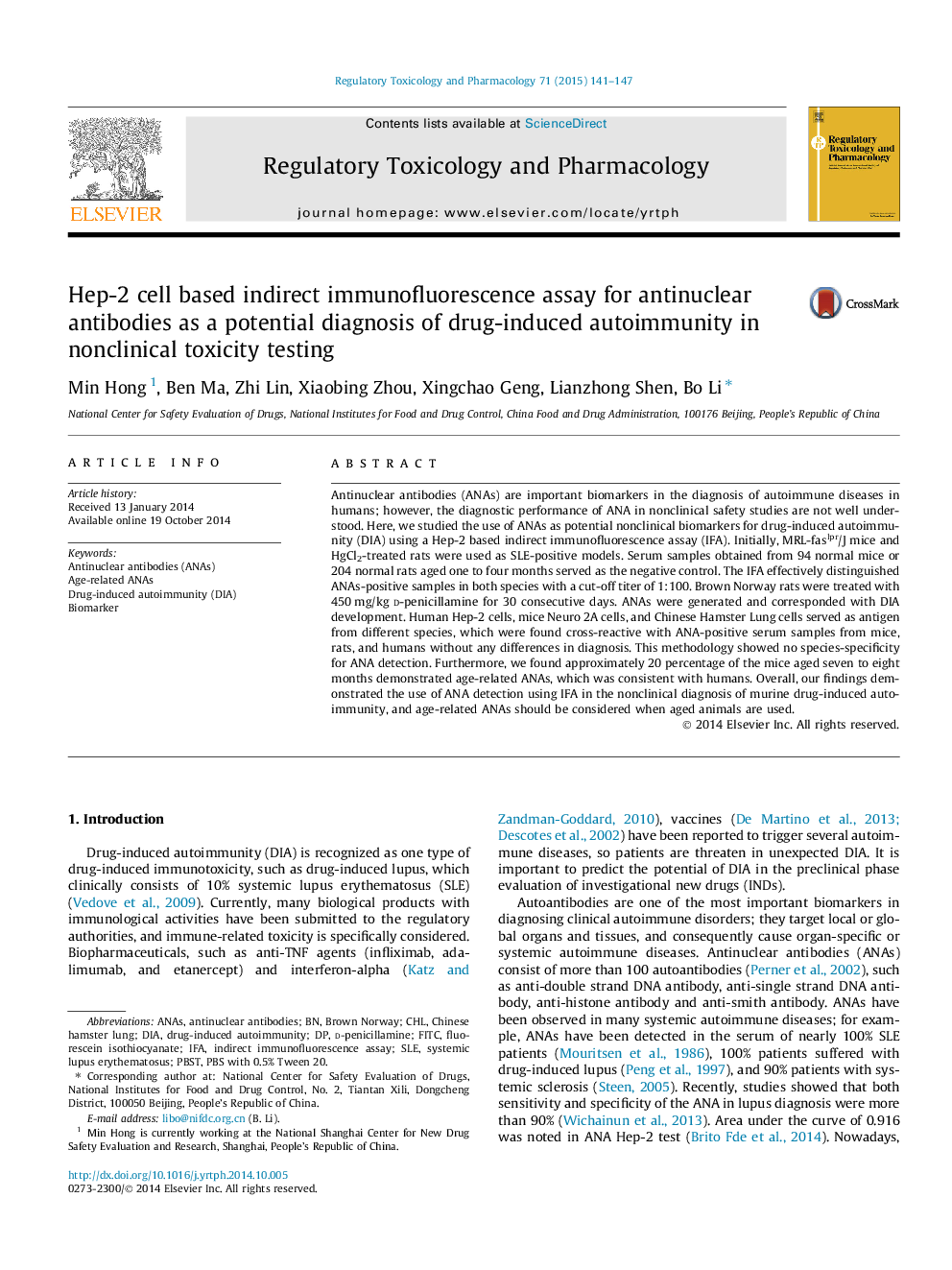| Article ID | Journal | Published Year | Pages | File Type |
|---|---|---|---|---|
| 5856485 | Regulatory Toxicology and Pharmacology | 2015 | 7 Pages |
Abstract
Antinuclear antibodies (ANAs) are important biomarkers in the diagnosis of autoimmune diseases in humans; however, the diagnostic performance of ANA in nonclinical safety studies are not well understood. Here, we studied the use of ANAs as potential nonclinical biomarkers for drug-induced autoimmunity (DIA) using a Hep-2 based indirect immunofluorescence assay (IFA). Initially, MRL-faslpr/J mice and HgCl2-treated rats were used as SLE-positive models. Serum samples obtained from 94 normal mice or 204 normal rats aged one to four months served as the negative control. The IFA effectively distinguished ANAs-positive samples in both species with a cut-off titer of 1:100. Brown Norway rats were treated with 450Â mg/kg d-penicillamine for 30 consecutive days. ANAs were generated and corresponded with DIA development. Human Hep-2 cells, mice Neuro 2A cells, and Chinese Hamster Lung cells served as antigen from different species, which were found cross-reactive with ANA-positive serum samples from mice, rats, and humans without any differences in diagnosis. This methodology showed no species-specificity for ANA detection. Furthermore, we found approximately 20 percentage of the mice aged seven to eight months demonstrated age-related ANAs, which was consistent with humans. Overall, our findings demonstrated the use of ANA detection using IFA in the nonclinical diagnosis of murine drug-induced autoimmunity, and age-related ANAs should be considered when aged animals are used.
Keywords
Related Topics
Life Sciences
Environmental Science
Health, Toxicology and Mutagenesis
Authors
Min Hong, Ben Ma, Zhi Lin, Xiaobing Zhou, Xingchao Geng, Lianzhong Shen, Bo Li,
